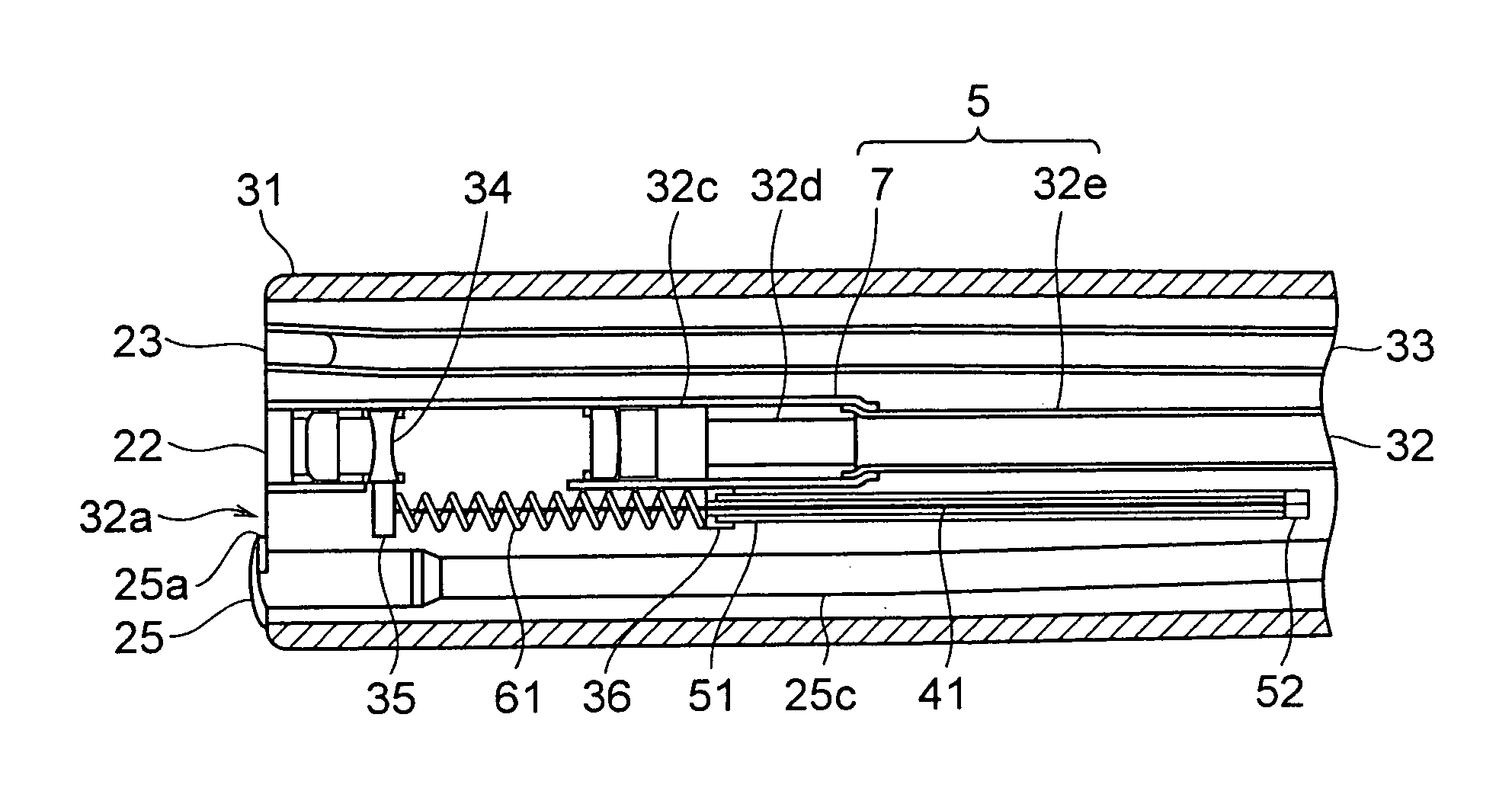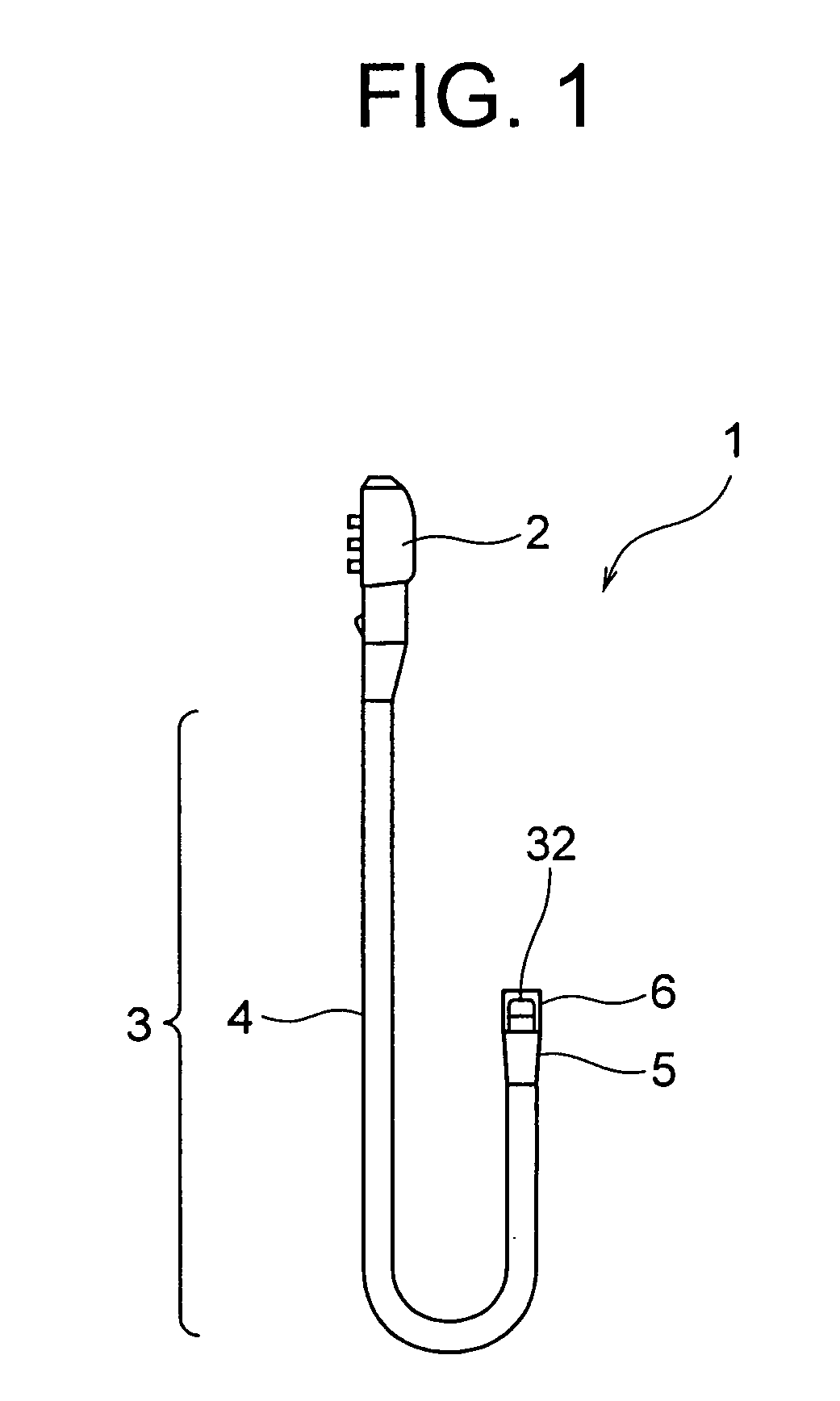Endoscope apparatus
- Summary
- Abstract
- Description
- Claims
- Application Information
AI Technical Summary
Benefits of technology
Problems solved by technology
Method used
Image
Examples
first embodiment
[0104]FIG. 1 shows a schematic view of an endoscope apparatus according to a first embodiment of the present invention. As shown in FIG. 1, an endoscope 1 includes an operating section 2 which performs a bending operation and a control of a pipe conduit system, and an inserting section 3 of which a rear end side is connected to the operating section 2, and which is inserted into a body cavity of a body to be examined.
[0105] The inserting section 3 includes a flexible tube 4, a bending section 5 which can be bent, and which is provided at a front end side of the flexible tube 4, and a front end section 6 which is rigid, and which is provided at a front end side of the bending section 5. The front end section 6 includes an imaging unit 32 which is built in, and which takes an image of a portion inside a body cavity which is being observed. The imaging unit 32 will be described later.
[0106]FIG. 2 shows a front view of an inserting front end section of the endoscope 1 shown in FIG. 1....
second embodiment
[0121]FIG. 5 shows a cross-sectional view of an endoscope apparatus according to a second embodiment of the present invention. Same reference numerals are assigned to components same as in the first embodiment, and a description to be repeated is omitted. FIG. 5 shows a vicinity of the imaging unit 32 in a cross-sectional view of a front end section along the line A-A in FIG. 2.
[0122] The movable lens frame 35 has a groove 37. The shape memory element 41 and the bias-applying coil spring 61 are fixed to a connecting member 38. Moreover, the connecting member 38 is fitted in the groove 37. The structure is such that there exists a minute gap between the connecting member 38 and the groove 37.
[0123] By the connecting member 38 maintaining the gap from the groove 37 of the movable lens frame 35, even when an axis in a driving direction of the movable lens frame 35 and an axis in a direction of change of shape of the shape memory element 41 are misaligned by a small amount, the gap ab...
third embodiment
[0125]FIG. 6 and FIG. 7 show cross-sectional views of an endoscope apparatus according to a third embodiment of the present invention. Same reference numerals are assigned to components same as in the first embodiment, and a description to be repeated is omitted. FIG. 6 and FIG. 7 show a vicinity of the imaging unit 32 in a cross-sectional view of the front end section along the line A-A in FIG. 2.
[0126] In the third embodiment, stoppers 39a and 39b are installed on a movable area (range of movement) of the movable lens 34 in the lens barrel 7. The stoppers 39a and 39b are installed at positions abutting against the movable lens frame 35 in two states namely a state in which the shape memory element 41 is slackened, and a state in which the shape memory element 41 is contracted up on being heated up.
[0127]FIG. 6 shows a state in which the movable lens frame 35 is stopped upon being abutted against the stopper 39a shown on a left side in FIG. 6, due to the stress exerted by the bia...
PUM
 Login to View More
Login to View More Abstract
Description
Claims
Application Information
 Login to View More
Login to View More - R&D
- Intellectual Property
- Life Sciences
- Materials
- Tech Scout
- Unparalleled Data Quality
- Higher Quality Content
- 60% Fewer Hallucinations
Browse by: Latest US Patents, China's latest patents, Technical Efficacy Thesaurus, Application Domain, Technology Topic, Popular Technical Reports.
© 2025 PatSnap. All rights reserved.Legal|Privacy policy|Modern Slavery Act Transparency Statement|Sitemap|About US| Contact US: help@patsnap.com



